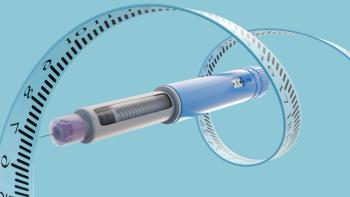
ASHP Midyear: Dose Rounding Strategies Minimize Waste and Maintain Patient Safety
Dose rounding within an acceptable range can provide cost savings and minimize waste, but requires careful interprofessional collaboration and patient education.
Kelsey Marques, PharmD, RPh, PGY1 Resident at Shore Medical Center, explores the potential benefits and challenges of dose rounding in health care settings. She explain that rounding doses within a 5% to 10% range can maintain clinical effectiveness and lead to cost savings by minimizing drug waste, especially for high-cost biologics. Interprofessional collaboration is emphasized as crucial, with pharmacists analyzing utilization patterns, setting acceptable rounding thresholds, and educating providers on best practices.
Pharmacy Times: What are the potential benefits and drawbacks of dose rounding in oncology and biologic therapy?
Kelsey Marques: So there's a lot of potential benefits. The biggest one would be minimizing drug waste as well as improving costs and potentially streamlining administration and preparation processes. The biggest drawback there would be any apprehension that may come with small dose deviations in terms of efficacy or toxicity for both patients and providers.
Pharmacy Times: Does dose rounding impact the accuracy of drug administration and patient outcomes?
Marques: Dose rounding—if done within an acceptable range—can maintain clinical effectiveness. The biggest thing would be that research had showed dose rounding between 5% to 10% of the original prescribed dose can maintain efficacy and minimize any adverse effects.
Pharmacy Times: What factors influence the potential cost savings from dose rounding, such as drug cost, administration time, and waste reduction?
Marques: There's many different factors that influence the drug savings that you can have. So, the biggest thing would be the vial sizes, the original prescribed dose, obviously, the drug cost per vial—especially with biologics that have an extreme high cost—and then, as well as any potential waste that one may have.
Pharmacy Times: How can pharmacists and other health care providers work together to optimize dose rounding practices and maximize cost savings while making sure treatment is optimized for the patient?
Marques: Interprofessional collaboration is absolutely key for this. As pharmacists, we can analyze drug utilization patterns, as well as advising unacceptable dose surrounding thresholds and ultimately educating providers on these best practices. As health care providers, we must ensure that we're maintaining patient safety and just educating patients on what we might potentially be doing if we are going to dose around.
Pharmacy Times: What are the potential challenges and barriers to implementing dose rounding, and how can these be overcome?
Marques: I think the biggest challenge that really comes with this would be patient apprehension, making sure that providers are well educated as well as any difference in formulations for the drug. But the best way to overcome this would be instilling evidence-based policies at your institution, having robust education for the providers, and then communicat[ing] with the patients to make sure that they're well aware of what's going on behind the scenes.
Pharmacy Times: Is there anything else you would like to add?
Marques: As a reminder, we're here as health care professionals, and we just want to make sure that we're entering the best safety for our patients and that we're utilizing best practices within our institution.
Newsletter
Stay informed on drug updates, treatment guidelines, and pharmacy practice trends—subscribe to Pharmacy Times for weekly clinical insights.

















































































































































































































